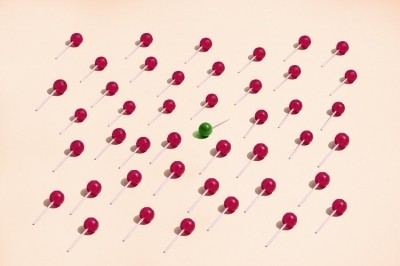Is duckweed the next miracle plant protein?

If you’ve heard of it at all, you are probably more used to seeing duckweed in ponds rather than food. The leaves often float on the water's surface and will proliferate if not cleared away.
However, there are reasons why this unlikely aquatic plant could be used by food manufacturers, both as a plant-based protein and a meal ingredient.
What is the potential of duckweed?
It may seem strange, but duckweed is considered by some to have potential as a plant-based protein. According to the University of Leeds, it is 43% protein and also contains mineral nutrients, starch and fatty acids.
The plant, which has a variety of species, can grow quickly in large volumes and in many environments. In fact, it can double its mass in just a few days, making it a potential high-volume, low cost protein.
Because it is aquatic, it doesn’t require large-scale land use or fertiliser, making it more sustainable than many other protein sources.
As it is often found in low-income countries, such as Nigeria, it can also be a useful protein to complement often starch-heavy diets of people in these countries. According to Wageningen University, it is six times more efficient than soy due to its very high-protein content.
It’s already beloved of ducks – hence the name. Humans and ducks already share a love of bread, so is it such a stretch to share consumption of duckweed as well?
How can duckweed be utilised?
To make the most of duckweed, it must be put into a form where it can be used as a protein in plant-based substitutes.
It must also be safe to eat. On the subject of safety, there has been concern around duckweed consumption due to the presence of heavy metals, pesticides, pathogens, dioxides and anti-nutritional factors. Heavy metals can cause gastrointestinal cancer, can affect mental growth and impair immunological mechanisms, and can lead to malnutrition when ingested in food.
A study in the International Journal of Vegetable Science explored how duckweed could be turned into a powder.
In order to turn it into a powder, the study compared three methods: sun drying, shade drying and sun-drying with blanching (heating with hot water and steam to a sufficient temperature to destroy enzymes in tissues). The study explored how these processes affected nutritional content.
The use of blanched sun-drying can, the study found, be used to concentrate nutrients and bioactive compounds in duckweed. The blanched sun-dried duckweed also had the highest protein content, and was higher in minerals such as zinc and iron compared to those dried with other methods. Blanched sun-dried and shade-dried duckweed had the highest fibre content.
Furthermore, the duckweed was generally safe for consumption, although must be continually monitored for heavy metal content.
However, in terms of taste, the study found that although consumers were happy with duckweed-fortified products if they were the healthier option, they would still prefer those without it.
Some duckweed has been used in products already. The start-up Plantible, for example, has developed a duckweed-based protein. This can be used for a range of applications including in plant-based meat and as an egg replacer.
Are consumers open to eating duckweed?
The final question is, as always, will consumers accept it if it were to make it to the market? While in some parts of the world, such as Thailand, Myanmar and Laos, human consumption of duckweed is common, Western consumers are not as familiar with it.
One paper, published in the journal Food Quality & Preference and consisting of two studies, suggested that the duckweed manufacturers of the future have reasons to be optimistic.
The first study looked at the attitudes of Dutch consumers to duckweed prior to tasting it. Some consumers were aware of it, including its potential nutritional benefits and possible dangers.
The study found that, despite some associations with ponds affecting their initial perception of its taste, consumers were generally enthusiastic about the idea of consuming duckweed, with no participant objecting to eating it providing it was safe for consumption. Duckweed was generally considered more appealing than other unusual protein sources, such as insects or algae.
Many consumers also viewed it as a vegetable, fit for use in salads and sandwiches, and as a garnish. They doubted whether people would recognise it as the pond-dwelling weed when they found it packaged in a supermarket.
The second study evaluated consumer attitudes towards eating and buying duckweed. The ideas about the most fitting uses of duckweed from the first study were used as stimuli to gauge participant responses to duckweed used in these contexts, compared to images of duckweed used in more unusual contexts (for example, duckweed cake).
The second study presented a slightly positive view of duckweed as food, indicating that consumers are open to buying and eating it. They evaluated it more positively when it was put into ‘fitting’ meals.
Sourced From: International Journal of Vegetable Science
'Processing techniques on phytochemical content, proximate composition, and toxic components in duckweed'
Published on: 18 June 2020
Doi: https://doi.org/10.1080/19315260.2020.1781320
Authors: I. Ifie, S. Olatunde, O. Ogbon & J. Evawere Umukoro
Sourced From: Food Quality & Preference
'Duckweed as human food. The influence of meal context and information on duckweed acceptability of Dutch consumers'
Published on: January 2019
Doi: https://doi.org/10.1016/j.foodqual.2018.06.005
Authors: M. F.A. de Beukelaara, G. G. Zeinstraa, J. J. Mesa, A. R.H. Fischer
























